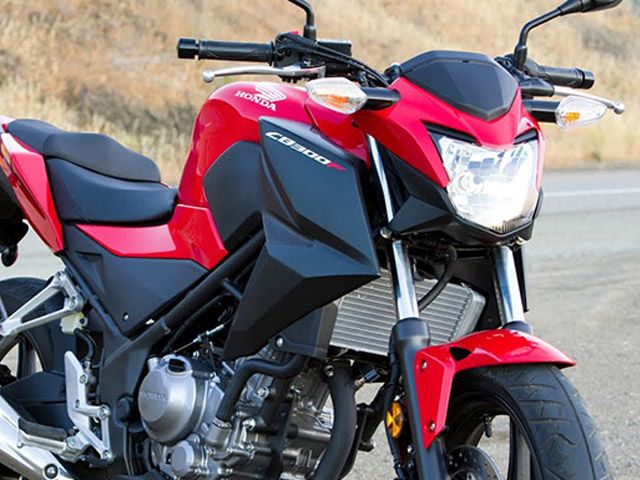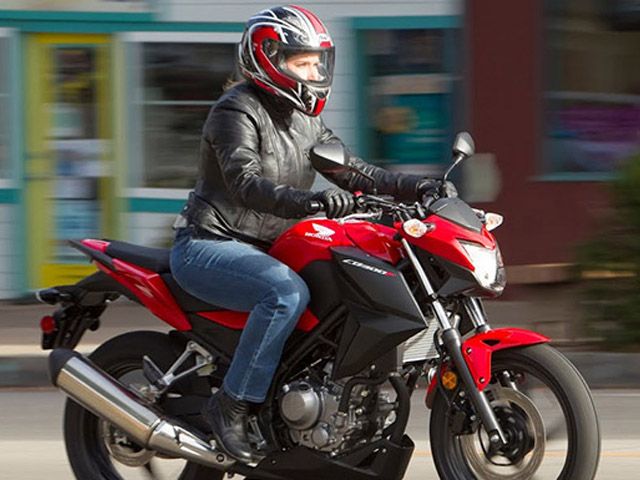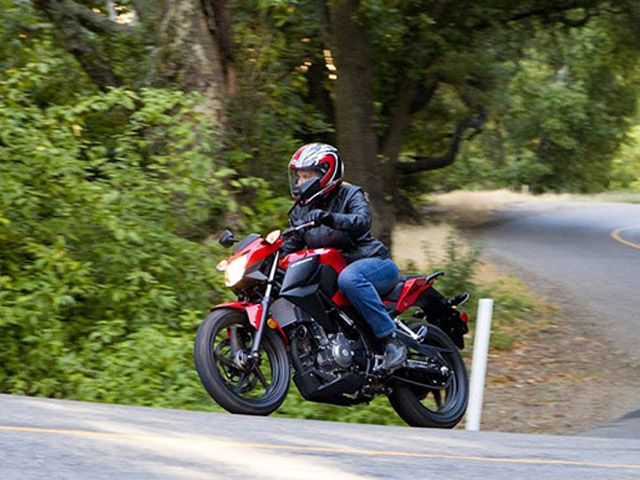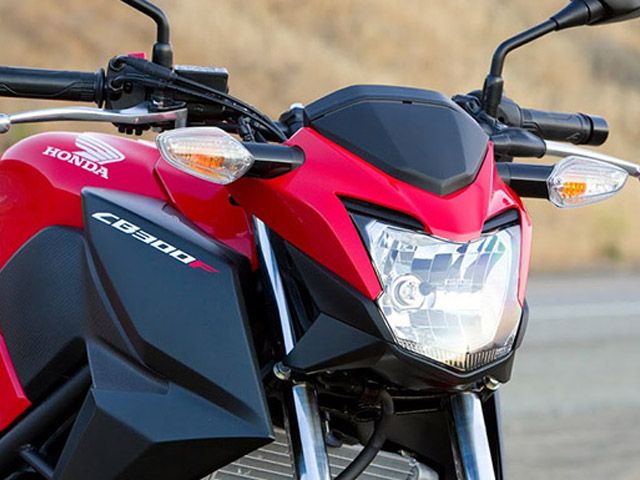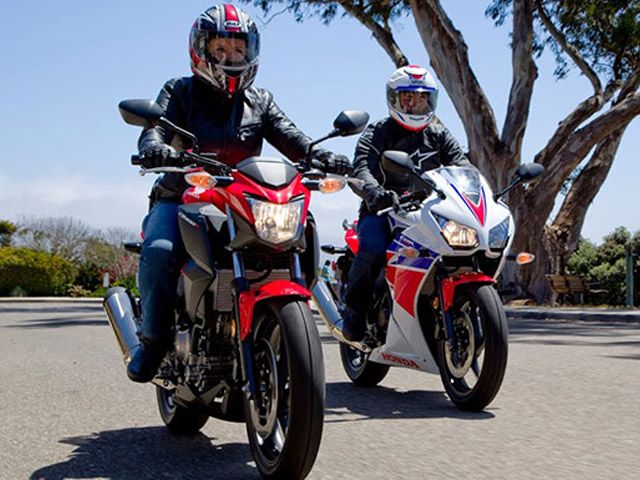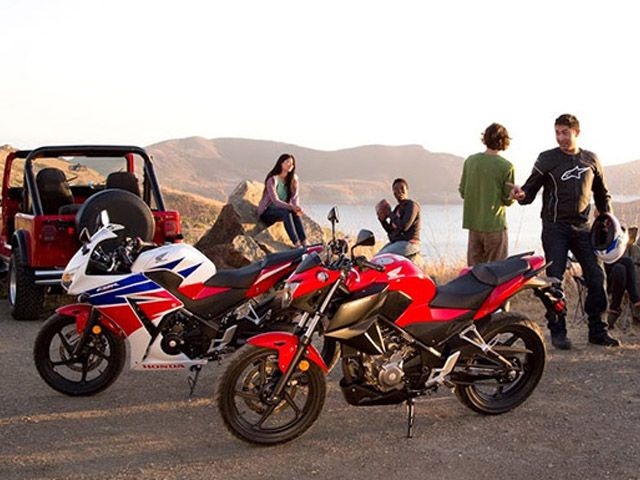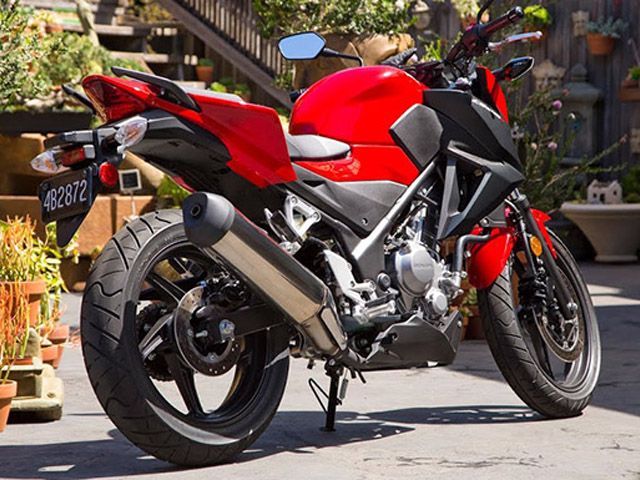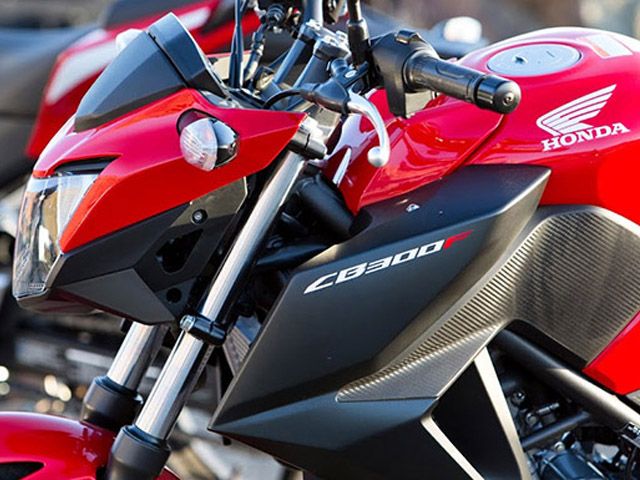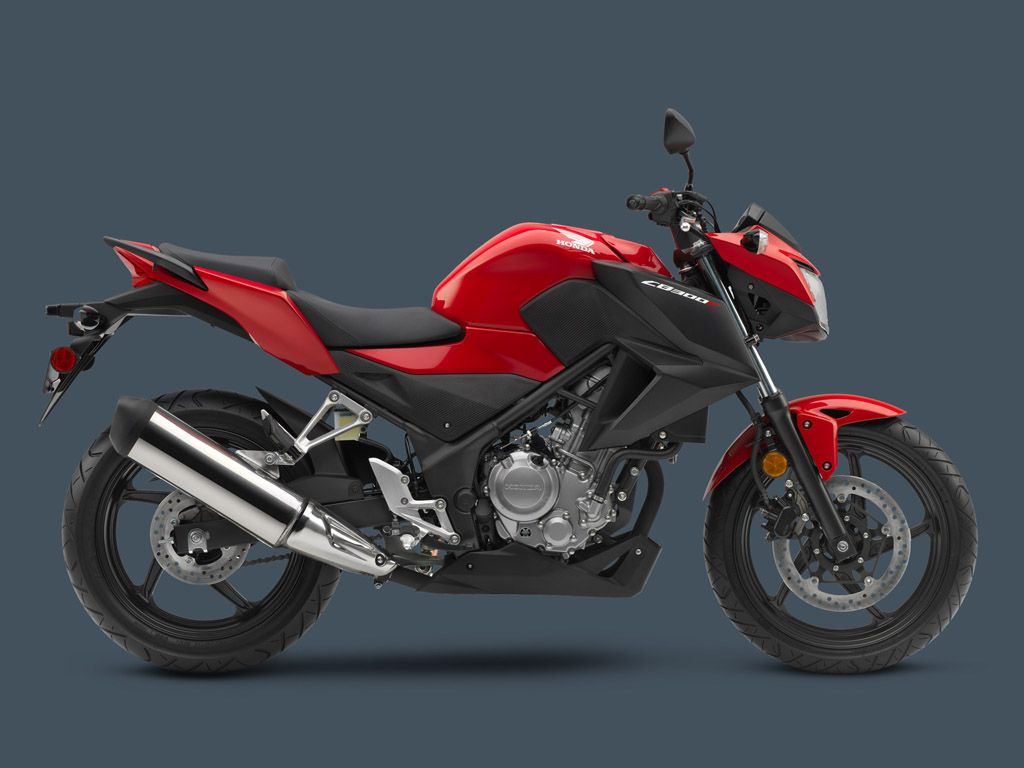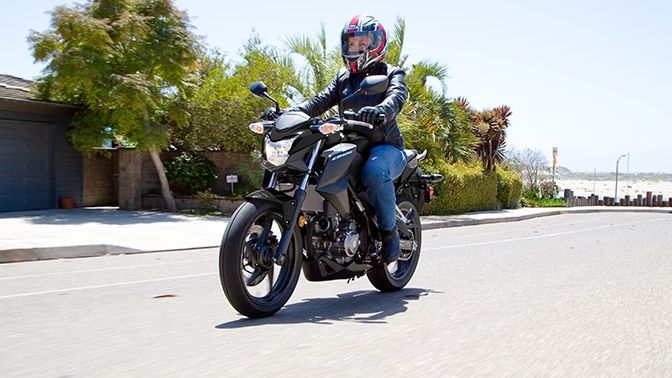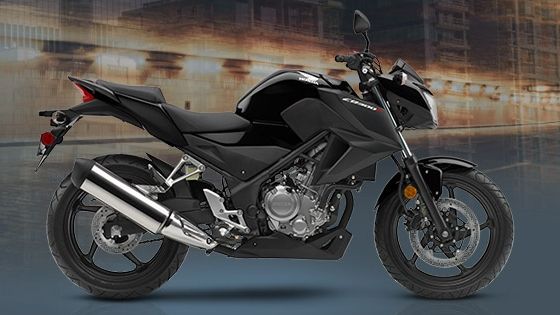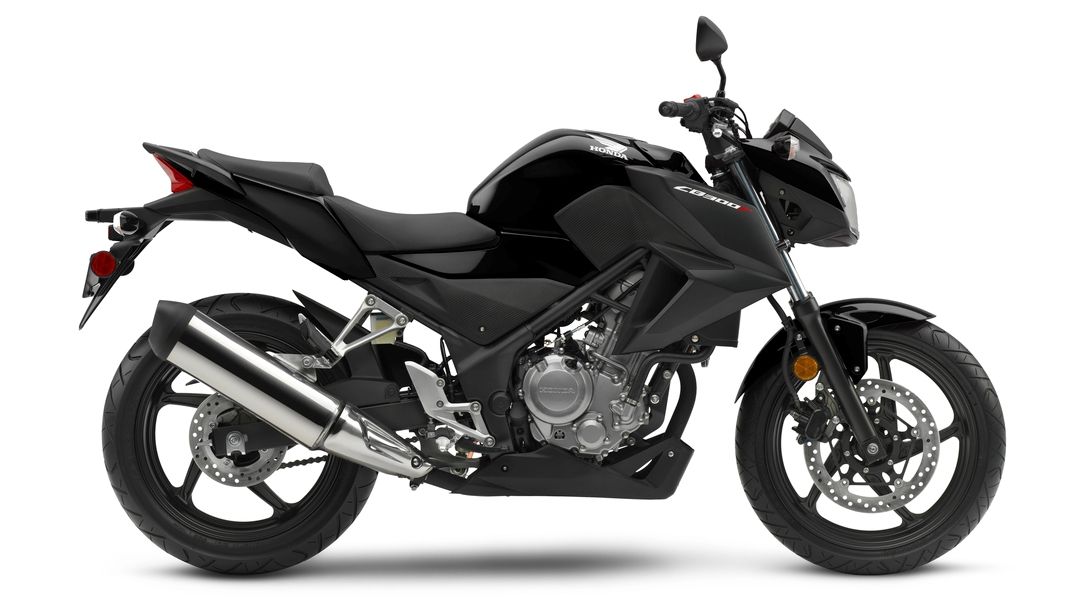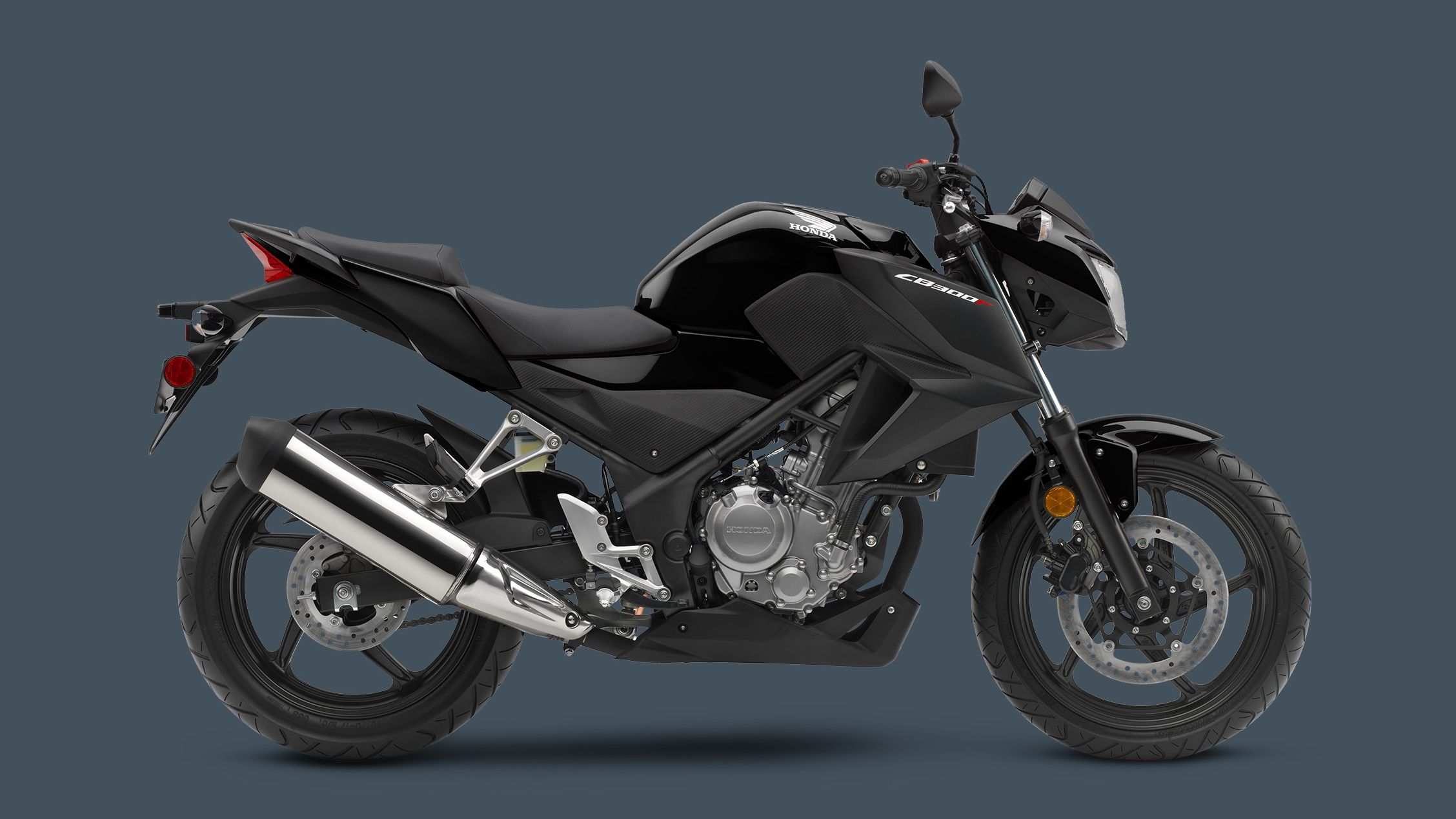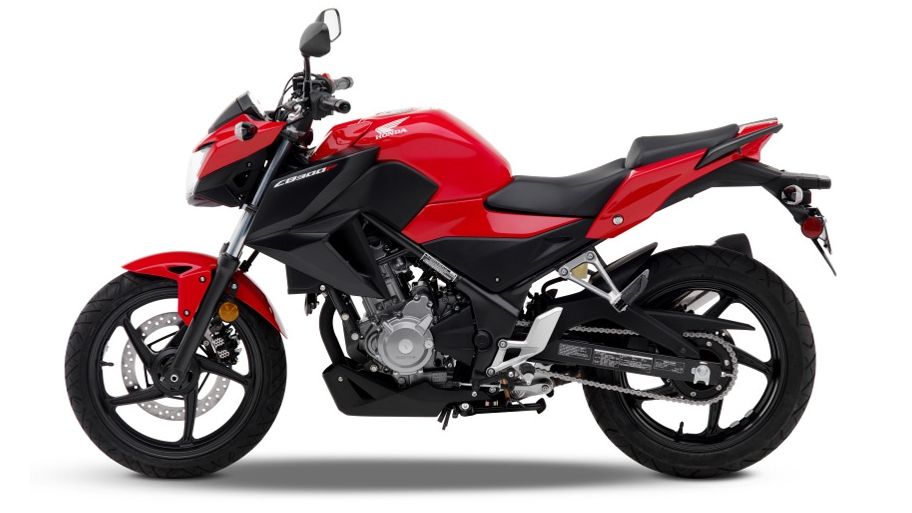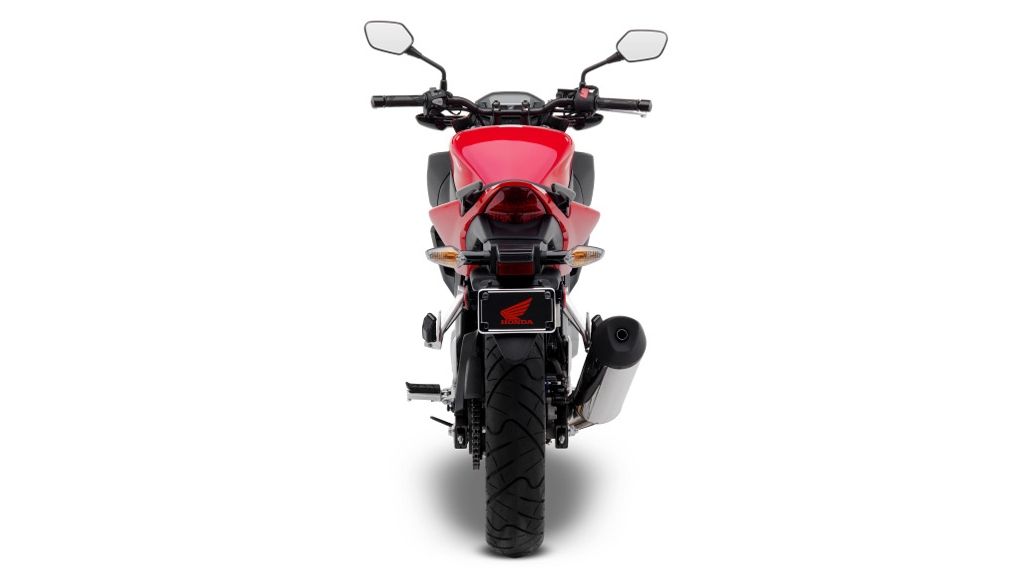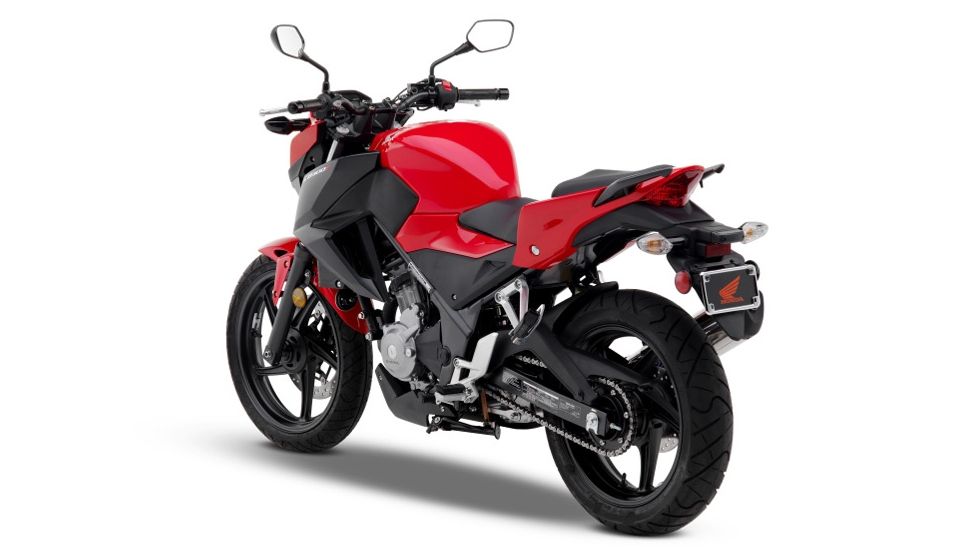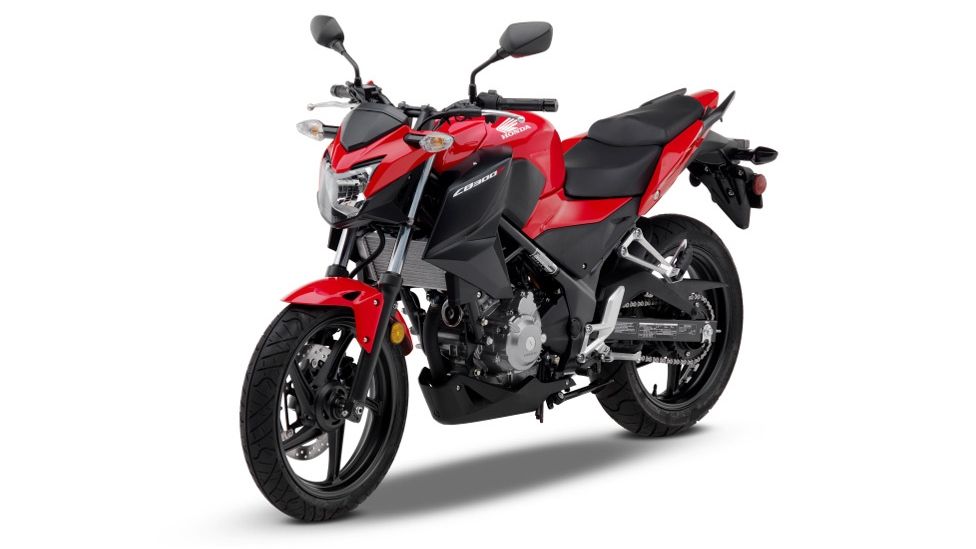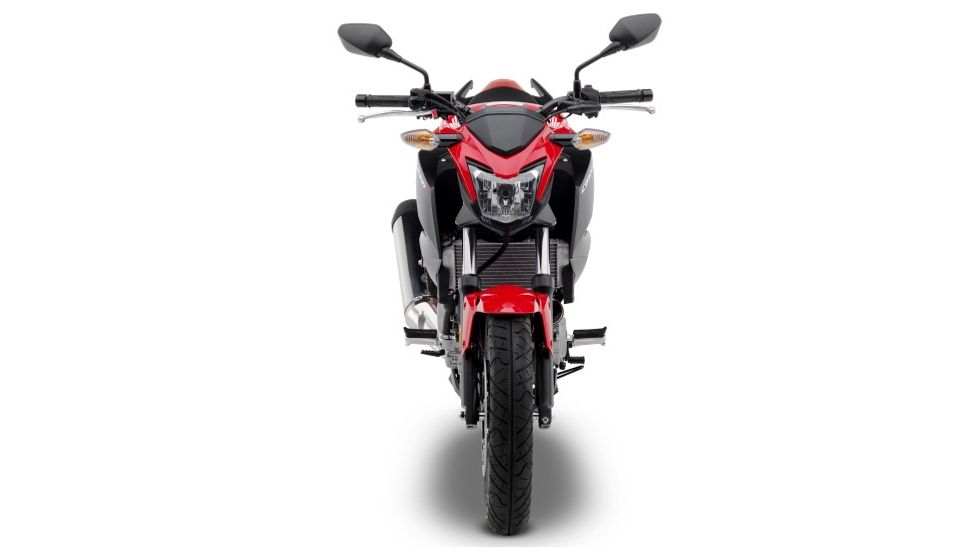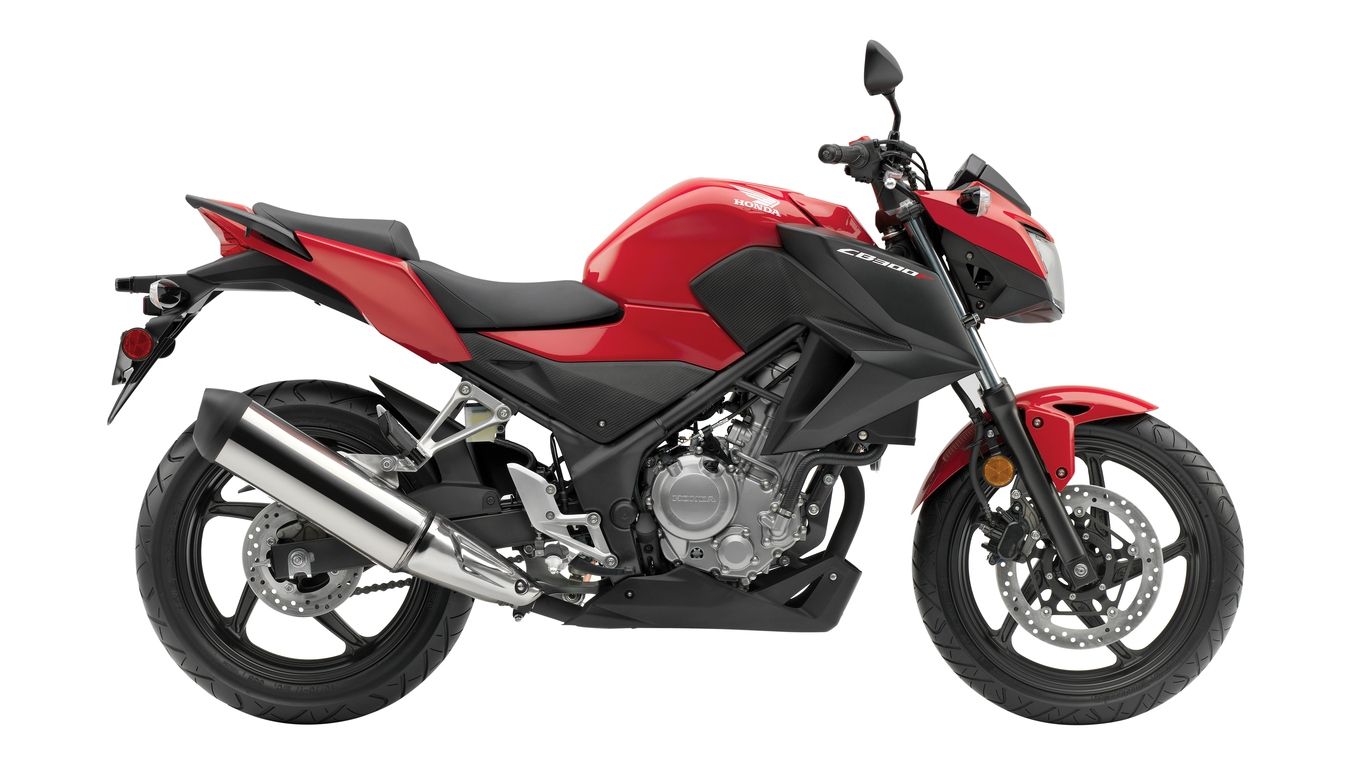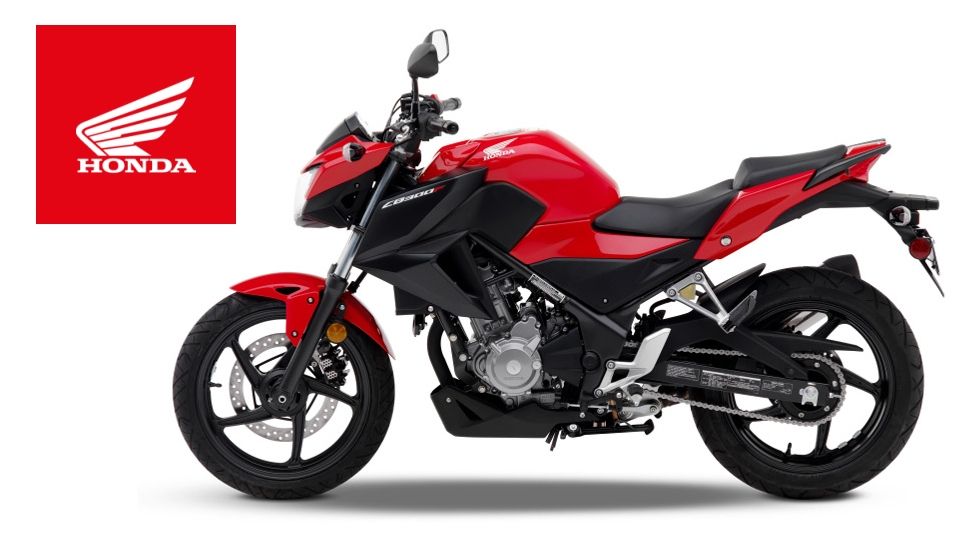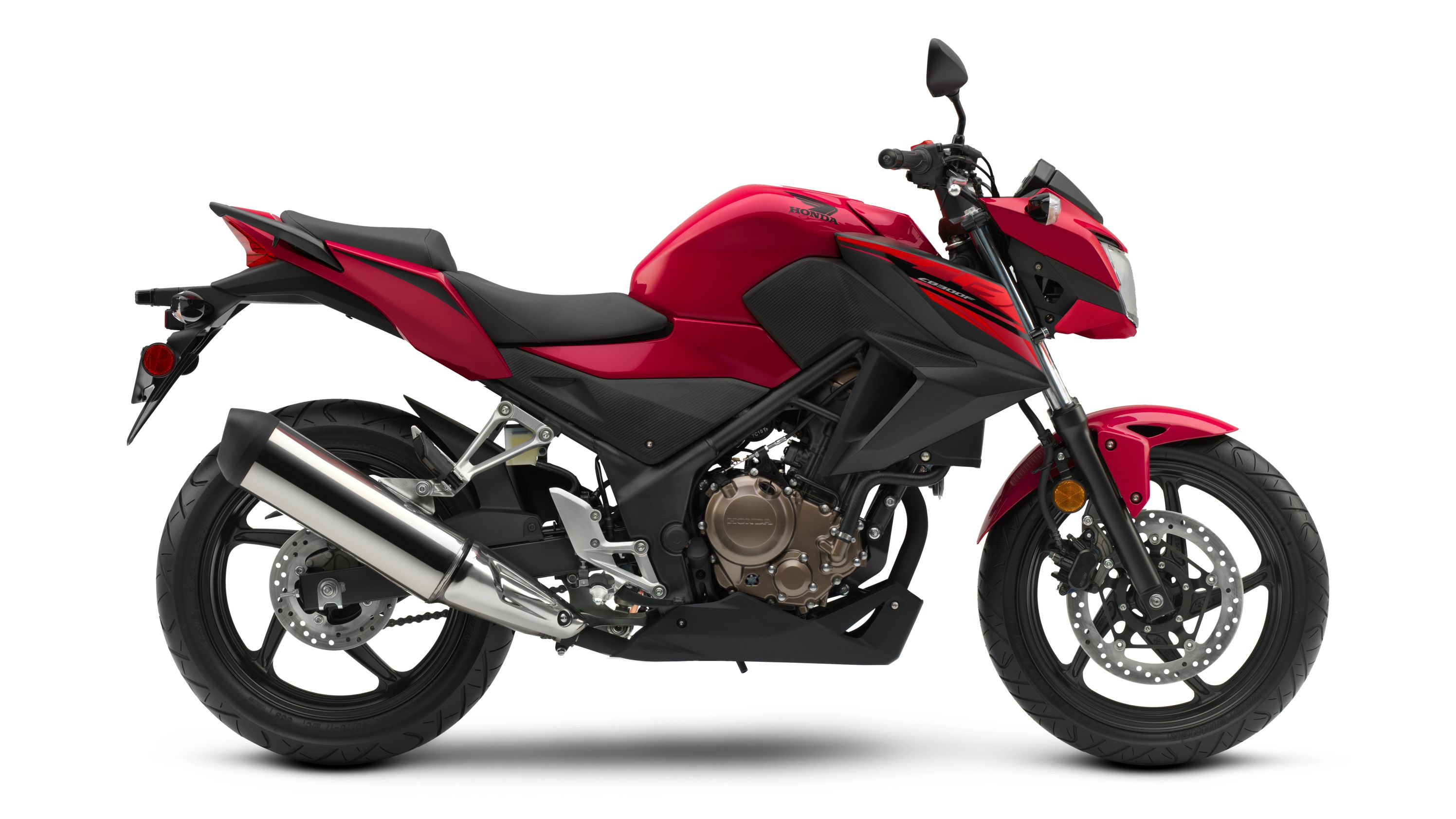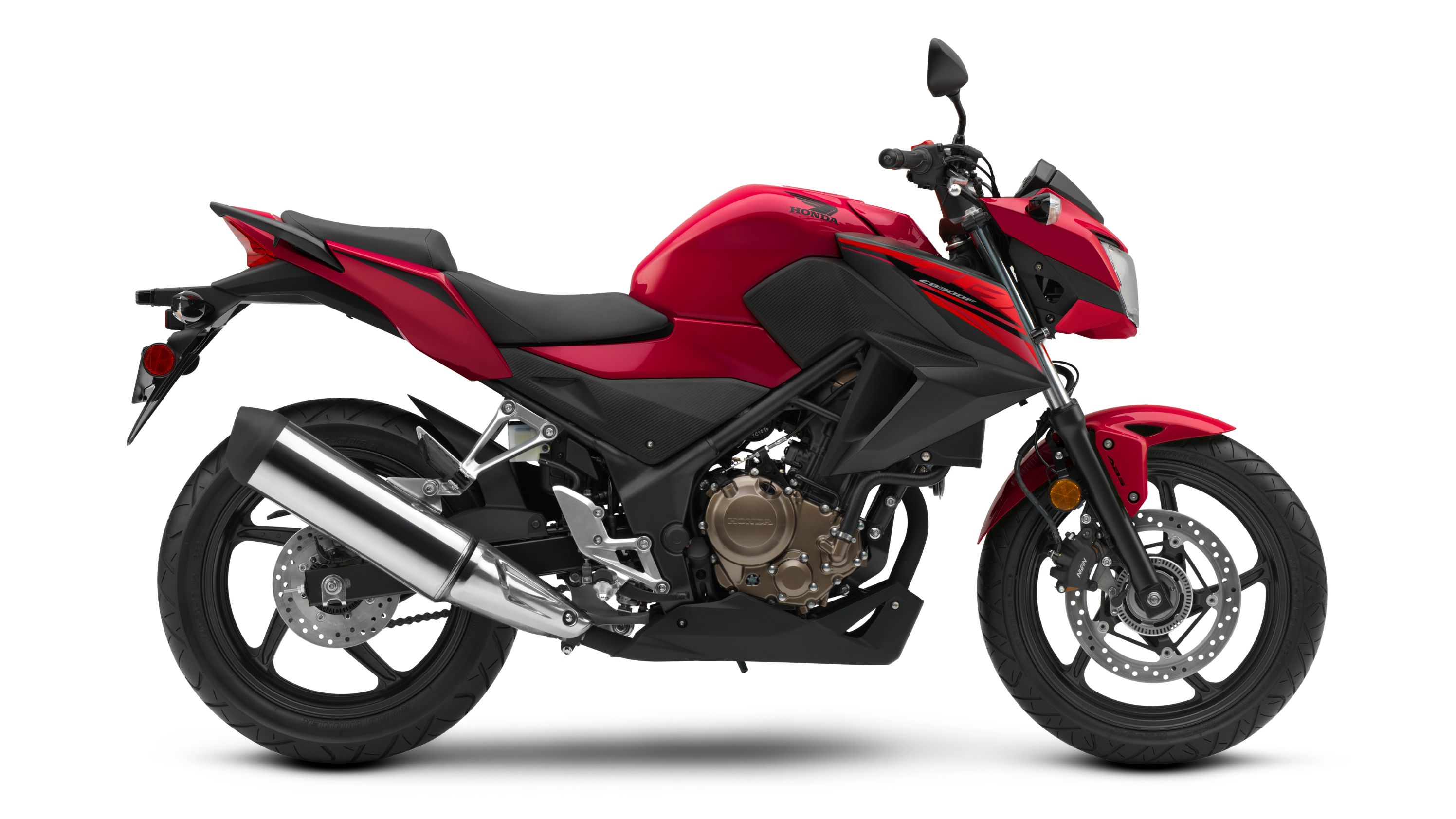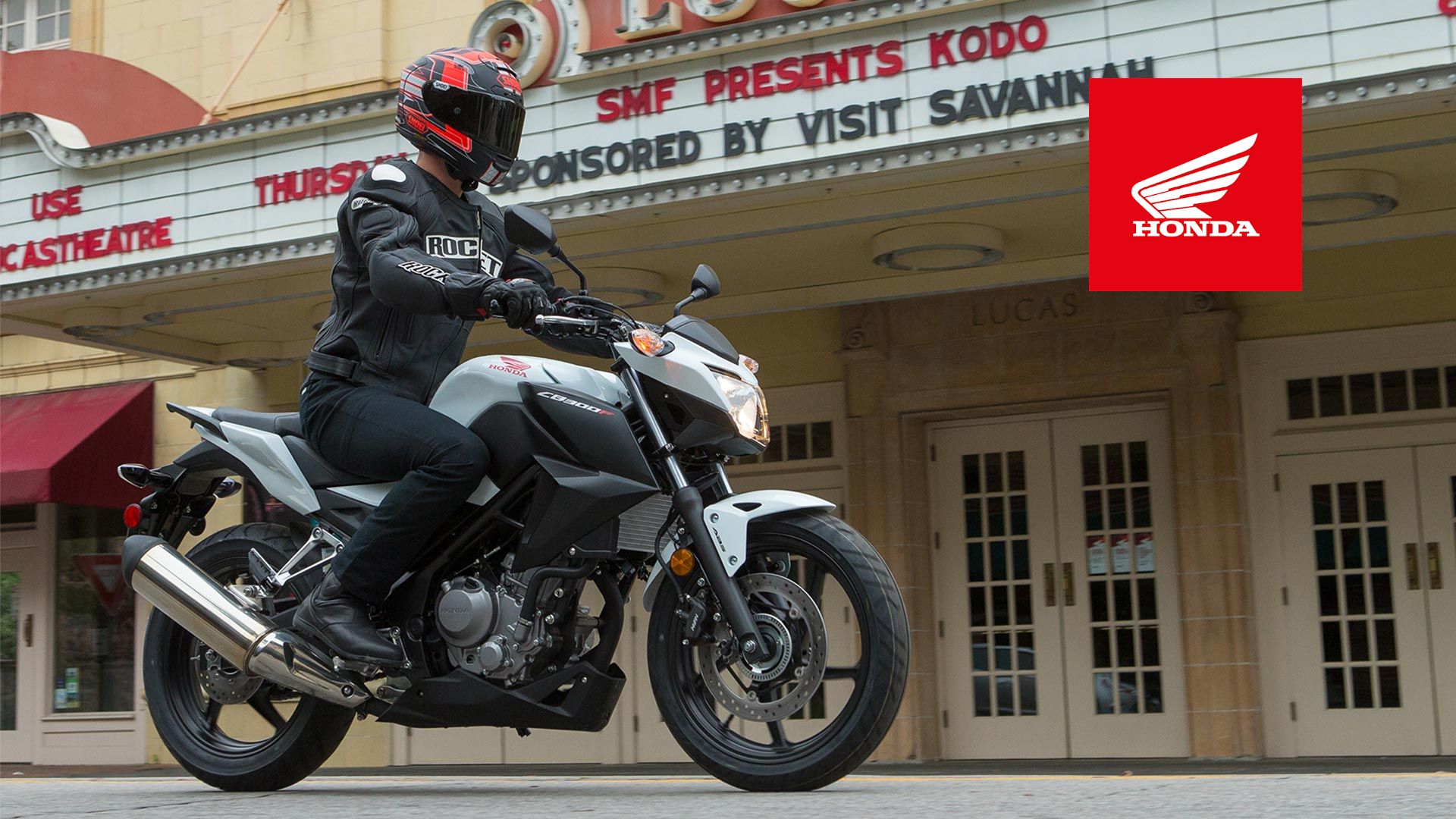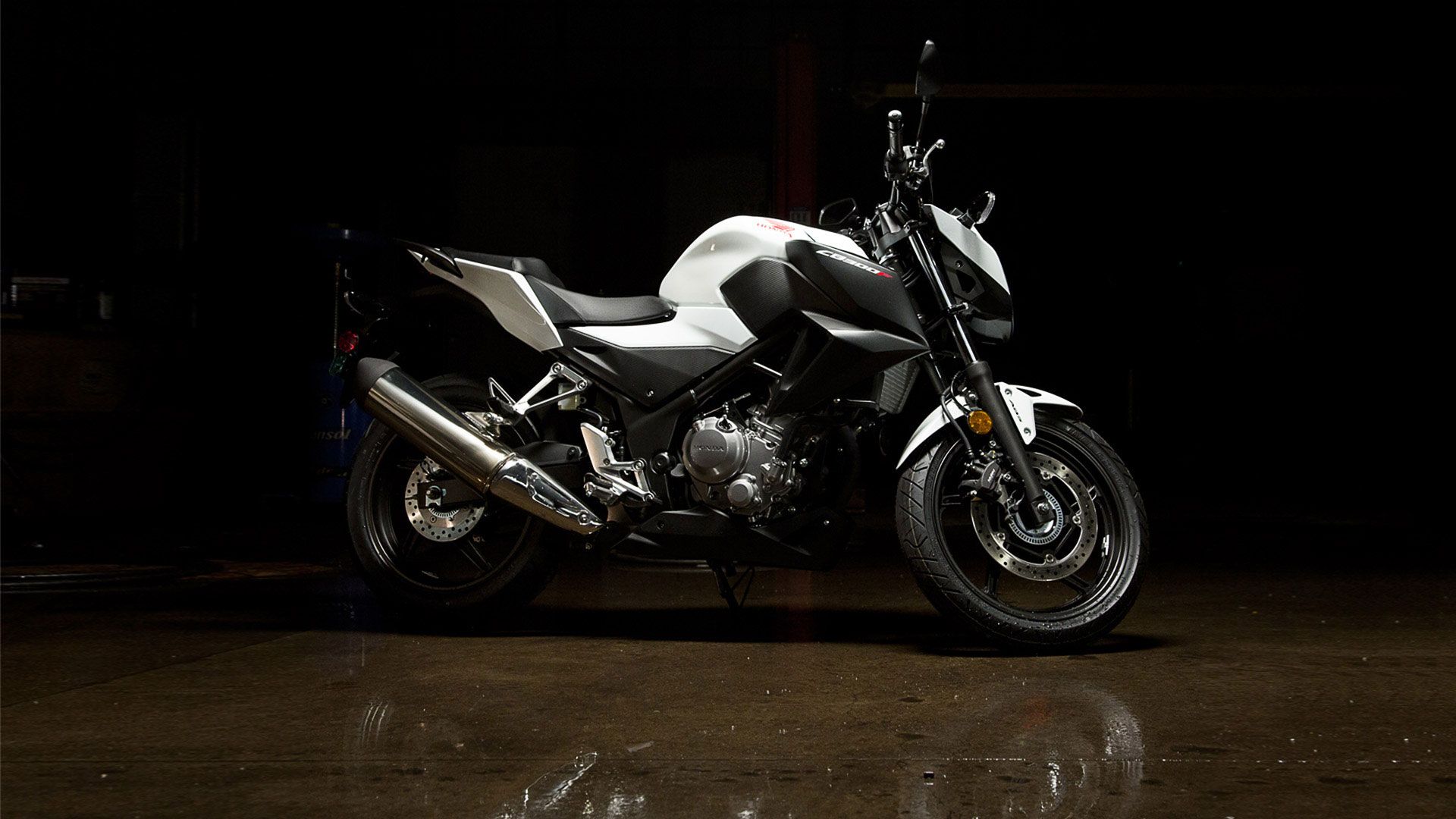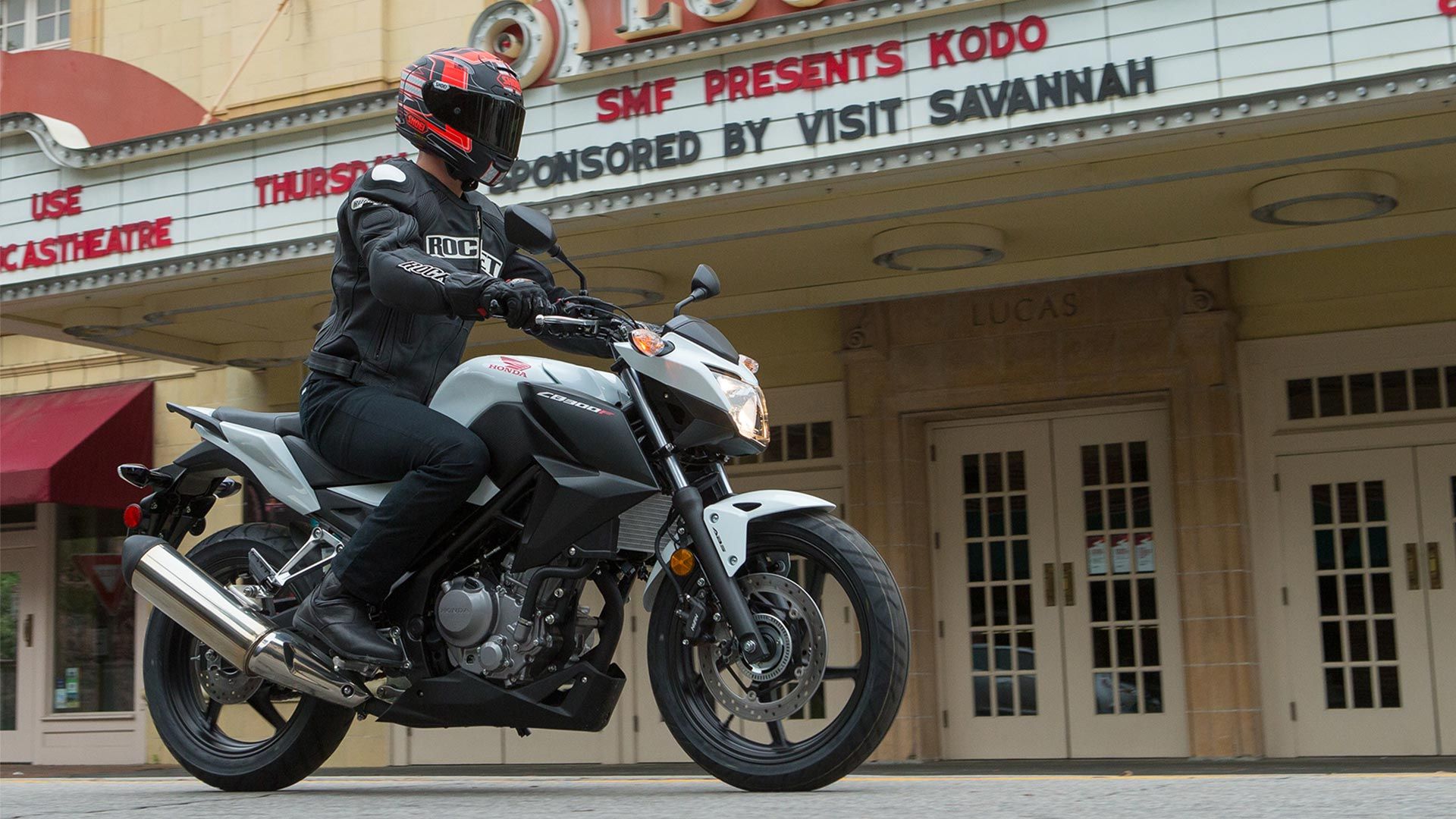New from 2015 and going strong in 2018, the CB300F from Honda is all about naked sportbike styling at an entry-level price and demeanor. A little bit lighter and with a more upright riding position than its kissing cousin, the CBR300R, the CB300F carries essentially the same engine as the CBR250R but with a longer stroke to add a few more cubes to the mix. Beginner's bike? Check. Commuter bike? Check. Sportbike trainer? I don't know. Let's check it out.
Continue reading for my review of the Honda CB300F.
2015 - 2018 Honda CB300F
- Make: Array
- Model: 2015 - 2018 Honda CB300F
- Engine/Motor: Liquid-cooled single-cylinder four-stroke
- [do not use] Vehicle Model: Array
Design
As a beginner's bike, this has a lot of features on the plus side. The relatively low seat height -- I say "relatively" because it's low for a sport-styled bike, but not nearly in the same range as a cruiser -- and a narrow frame make it easy to find the ground and plant your feet. I'm 5' 4" and I'm tippy-toeing, but it's the narrow frame that keeps me from having to chose one foot or the other. Combine that with a more upright riding position and you have a bike that folks new to two wheels can gain confidence on as they increase their skillset.
The LCD digital instrumentation -- which includes a fuel gauge -- is easy to read, though as a beginner's bike, I'd like to see a gear indicator. The tach and speedometer are big and dominate the display as I would expect them to, so you can take them in at a glance. Unlike the CBR, this has an idiot light for temperature, but for the price, I guess I really can't complain.
On the highway, the CB300F is capable, but in my opinion, starts to struggle over 80 mph sustained speed. The interstate speed limit is 70 mph where I am, so I'm okay if I stay within the posted limit. As a commuter bike, if you have to get on the interstate and jump up a couple of exits, you'll be okay. If your commute takes you up farther up the highway, look into a windscreen.
Chassis
Honda's little trainer starts out on 17-inch, cast rims, and nearly symmetrical hoops with a 110/70 up front, and a 140/70 tire in back. Given its fight weight of only 348 pounds (355 on the ABS version) soaking wet, it doesn't take much in the way of braking power to keep it under control. With that in mind, Honda gets a pass for only running a single, 296 mm disc with a twin-pot caliper up front, and a 220 mm disc with a single-piston binder in back.
Right-side-up front forks come with 4.65 inches of travel and blackout fork sliders to match the rims. I'd like to gig Honda for the lack of front-end adjustment, but honestly, since this is meant as a sort of training bike, such adjustments would likely be lost on its targeted buyers. The rear monoshock works on a progressive-link system, provides 4.07 inches of travel and sports a five-slot, preload adjuster.
A single-downtube, stressed engine frame sets the stage for the various features, and gives the CB300F the contemporary UJM look, which is to say a sporty standard. The steering head is set at 25.3-degrees, and the trail measures out at 3.9-inches long, so its responsive to steering inputs without acting as squirrelly as some bikes with less trail -- all good stuff for someone just learning the ropes.
|
Front Suspension: |
37mm fork; 4.65 inches travel |
|
Rear Suspension: |
Pro-Link® single shock with five positions of spring preload adjustability; 4.07 inches travel |
|
Front Brake: |
Single 296mm disc (ABS model with ABS) |
|
Rear Brake: |
Single 220mm disc (ABS model with ABS) |
|
Front Tire: |
110/70-17 |
|
Rear Tire: |
140/70-17 |
Drivetrain
Honda refurbished its CBR250R lump by adding a crankshaft with an 8 mm longer throw and con-rods for a greater swept volume, which increased the displacement to 286 cc. The new, four-stroke thumper aspirates through a 38 mm throttle body and a four-valve head, and a computer-controlled ignition system manages the spark.
While this is a rather small engine, still it manages to push the bike up to around 106 mph, plenty fast for most circumstances, but too fast for a beginner or the folks down at the police department. Salient point is, small doesn't necessarily equate to slow.
A six-speed transmission gives you plenty of opportunity to keep the rpm in the powerband as you work your way up through the gears, and it sends the power down a chain final drive. We have no slipper clutch here, but much like the fork adjustments, it would likely be lost on most new riders, and a beginner shouldn't be pushing it that hard, anyway.
|
Engine: |
286cc liquid-cooled single-cylinder four-stroke |
|
Bore And Stroke: |
76mm x 63mm |
|
Induction: |
PGM-Fi, 38mm throttle body |
|
Ignition: |
Computer-controlled digital transistorized with electronic advance |
|
Compression Ratio: |
10.7:1 |
|
Valve Train: |
DOHC; four valves per cylinder |
Pricing
The best part of the CB300F is the price. MSRP was $4,149 for 2017 -- just $150 over 2016 -- so I expect 2018 to be about the same. That puts it squarely in the entry-level and budget-minded range. Your color choice is black or red, depending on which model year you get. For 2018, the CB300F comes in Chromosphere Red.
Competitors
Where to look, where to look? For a sport-bike-styled 300-ish cc motorcycle, I think first of the GW250F from Suzuki, but that isn't naked and it wasn't carried forward after 2015. Of course, the Ninja 300 ABS from Kawasaki is out there. Ninja is a popular line, but again, heavy on the body panels. When I think of a naked 300, Duke is a popular line that has some longevity. Let's look at the 390 Duke from KTM.
While both are fairly similar in design, and shun excessive body panels in favor of a more naked look that I, personally, find as sharp as a tack, though the KTM leaves even less to the imagination in a side-by-side comparison.
Looking at the engines and features, I gotta say that Honda seems to fall a little short. First off, the KTM sports a larger mill with a 373.2 cc displacement over Honda's 286 cc, a difference that can definitely be felt in the seat of your pants. Not surprising, given that the Honda lump cranks out around 26 ponies at the shaft, while the KTM puts out almost twice that with 44 horsepower.
If I want to find a plus in the lower power of the CB, it would have to be that there's less vibration -- not that the Duke has a lot. It doesn't, but the Honda feels more tame and more under control which is a plus for new riders.
While the power in the CB300F is certainly sufficient for a rank beginner, some riders may outgrow it fairly quickly and start looking for a bigger bike, but the Duke 390 will likely keep its rider excited a bit longer. One thing is for certain, at some point, owners will likely be looking for something bigger sooner or later, but such is the life of training bikes.
The CB300F rolled for $4,149 in 2017, while the KTM will set you back another grand. But, the Duke comes with race-bike-style, inverted front forks and a mechanical, slipper clutch, features riders will appreciate as they put some miles behind them and gain experience.
That, combined with the more powerful engine, will certainly extend the Duke's usefulness beyond a rider's formative mileage. The Duke also comes standard with ABS, though Honda did add an ABS version of the CB300F in 2017.
He Said
My husband and fellow writer, TJ Hinton, says “Man, I think the CB300 is just as cute as a bug. Absolutely precious, and certainly suitable for the entry-level market. I can see it as good, cheap transportation for, say, a student, or someone just needing a commuter vehicle with the capacity for some shenanigannery on winding, country roads. Best of all, it's so inexpensive, you may be tempted to mothball it for your kid to grow into, rather than try to recoup some money to put toward your 'big-boy' upgrade.”
She Said
"If you're not a new rider and you want a commuter bike that'll give you a reason to smile on the ride to and from work, go with the Duke. If you're a new rider that wants a sporty-looking bike or a rider that wants something with decent fuel economy to bop around town, go with the CB300F."
Specifications
|
ENGINE: |
|
|
Engine Type: |
286cc liquid-cooled single-cylinder four-stroke |
|
Bore And Stroke: |
76mm x 63mm |
|
Induction: |
PGM-Fi, 38mm throttle body |
|
Ignition: |
Computer-controlled digital transistorized with electronic advance |
|
Compression Ratio: |
10.7:1 |
|
Valve Train: |
DOHC; four valves per cylinder |
|
DRIVE TRAIN: |
|
|
Transmission: |
Six-speed |
|
CHASSIS / SUSPENSION / BRAKES: |
|
|
Front Suspension: |
37mm fork; 4.65 inches travel |
|
Rear Suspension: |
Pro-Link® single shock with five positions of spring preload adjustability; 4.07 inches travel |
|
Front Brake: |
Single 296mm disc (ABS model with ABS) |
|
Rear Brake: |
Single 220mm disc (ABS model with ABS) |
|
Front Tire: |
110/70-17 |
|
Rear Tire: |
140/70-17 |
|
DIMENSIONS: |
|
|
Rake: |
25.30 degrees |
|
Trail: |
98mm (3.9 inches) |
|
Wheelbase: |
54.3 inches |
|
Seat Height: |
30.7 inches |
|
Curb Weight: |
348 pounds (ABS: 355 pounds) |
|
Fuel Capacity: |
3.4 gallons |
|
Miles Per Gallon: |
2015 - 71 mpg, 2016/2017 - 78mpg |
|
OTHER: |
|
|
Model Id: |
CB300F |
|
Emissions: |
Meets current EPA standards. Models sold in California meet current CARB standards and may differ slightly due to emissions equipment. |
|
Available Colors: |
2015 - Red, 2016 - Black, 2017 - Red (ABS - Matte Silver), 2018: Chromosphere Red |
References
See our review of the KTM 390 Duke.


